The best way to send email is via Microsoft Outlook. In this post, we are going to show you how to clear the cache in MS Outlook and the new Outlook app. This is important because the program stores files for easier access, but there might come a time when these same files are the cause of slowdowns.
Deleting the cache also removes auto-complete data, among other things. Therefore, if Outlook is used regularly, one should always consider cleaning the cache at least once monthly. This task is quite simple, at least from our point of view.
But worry not. We will no doubt simplify everything to make the guide super easy to understand for even the most novice readers.
How to clear Outlook cache in Windows 11/10
Here is the procedure for completely deleting or clearing the Outlook cache files from their location and resetting them. This includes auto-complete data as well as other temporary files.
- Launch Outlook
- Find the Outlook cache location
- Delete cached files in Outlook
- Remove auto-complete cache in Outlook
- Restart Outlook
Find the Outlook cache location
The first step is to find the location of the cache, which is quite easy if you ask us. Before moving forward, please save whatever you’ve been doing, then press the Windows key + R to launch the dialog box.
Copy and paste %localappdata%\Microsoft\Outlook into the field and hit Enter on the keyboard.
Finally, navigate to the folder known as RoamCache to view all the files.
Delete cached files in Outlook
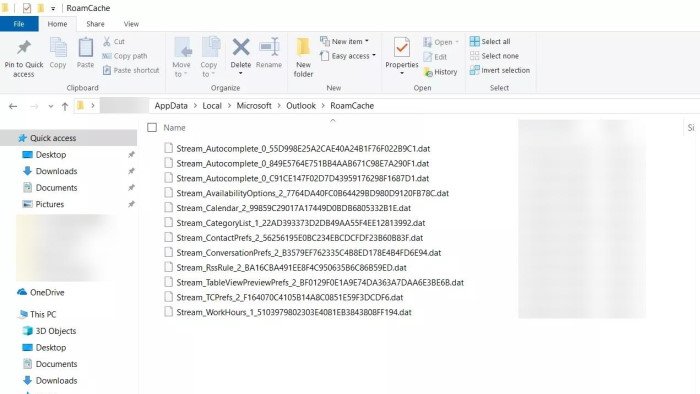
Now that we have found their location, it’s time to remove all cache files from Outlook. To do so, open the RoamCache folder, select all files within this folder, right-click, and hit the Delete option.
Alternatively, you could hold the Shift key to select all, then press the Delete key on your keyboard to get rid of the files.
Remove auto-complete cache in Outlook
Sometimes the auto-complete option can be a huge problem, especially when we’ve made simple mistakes and the tool decides to save it. The best option, then, is to clear the auto-complete cache, a task that requires the opening of Outlook itself.

When you open Outlook, click on File, then Options. From there, navigate to the Mail section, and from there, you should see Send Messages. Under that option, click on Empty Auto-Complete List to get rid of everything all at once.
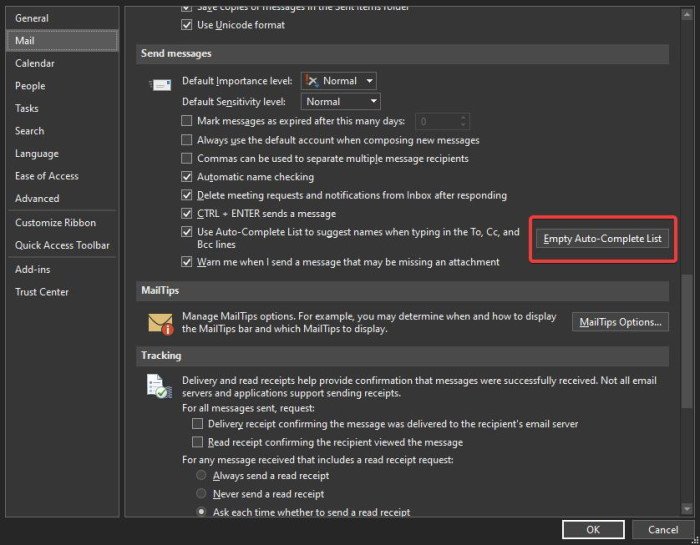
Finally, hit the OK button at the very bottom to complete the task 100 percent.
How to clear cache in new Outlook app
Clearing cache in the new Outlook for Windows is not as straightforward as in older versions, but it is a bit more technical and can still be done with a few steps. Let’s see how.
Make sure the new Outlook app is completely closed. Press Win + R together. This will open the Run dialogue. Next type the following command in the ‘Open’ field:
olk.exe --devtools
Make sure there’s a space before the two dashes, and click OK.

This command launches the new Outlook app as usual. Additionally, a second window called DevTools (Developer Tools) will automatically open alongside Outlook.
Note: olk.exe file is the executable file responsible for launching and managing the new Outlook for Windows. The olk.exe --devtools command opens the new Outlook with developer tools enabled, allowing for advanced troubleshooting and access to features such as cache clearing or inspecting elements within the Outlook environment.
In the DevTools window, click the Application button on the toolbar.
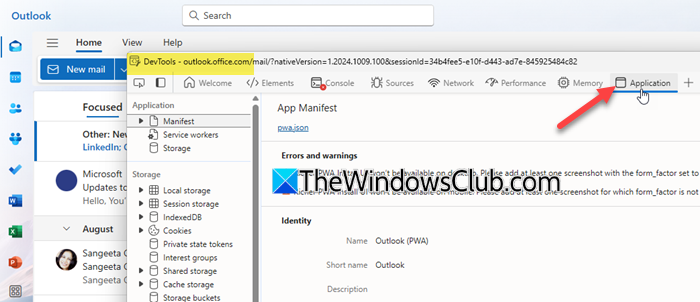
Now, take the following actions:
Clear local storage: In the left pane, expand Local storage (under Storage) and find the link: https://outlook.office.com. Right-click on this link and select Clear.
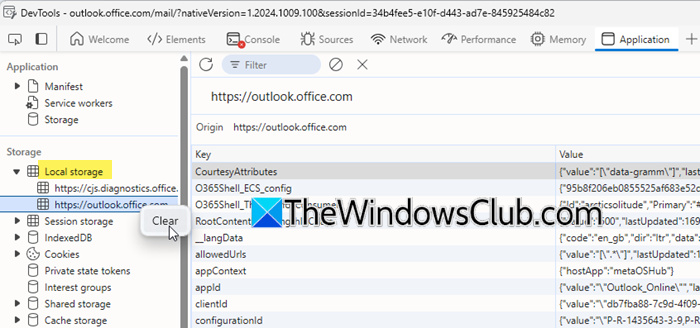
Clear cookies: In the left pane, expand the Cookies section, right-click on https://outlook.office.com, and select Clear.
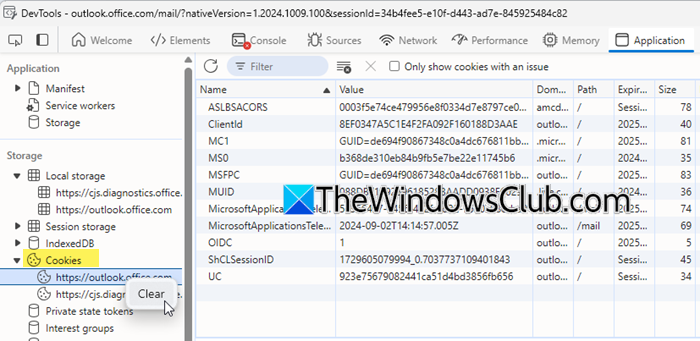
Once you’ve cleared both the local storage and cookies, close the DevTools window. The cache is now cleared, and you can open Outlook for a fresh start. You’ll need to sign in again.
This process will remove temporary files, including cached credentials and settings, giving you a clean slate for Outlook.
What happens if I clear my Outlook cache?
When you do this, the temporary files required by Microsoft Outlook are deleted. Any corruptions or issues caused by them are also removed, and you start fresh. Removing Outlook cache doesn’t delete emails, contacts, etc.
How to remove Microsoft respects your privacy notice
If you’re getting the “Microsoft respects your privacy” notice whenever you launch Outlook, we suggest following the above guide to get rid of it. The notice should only come up once and then go away forever, but this is not the case in some cases. We believe it is being stored in the Outlook cache, and clearing the cache is the only option to stop it at this time.
Other posts you may want to read:
Leave a Reply